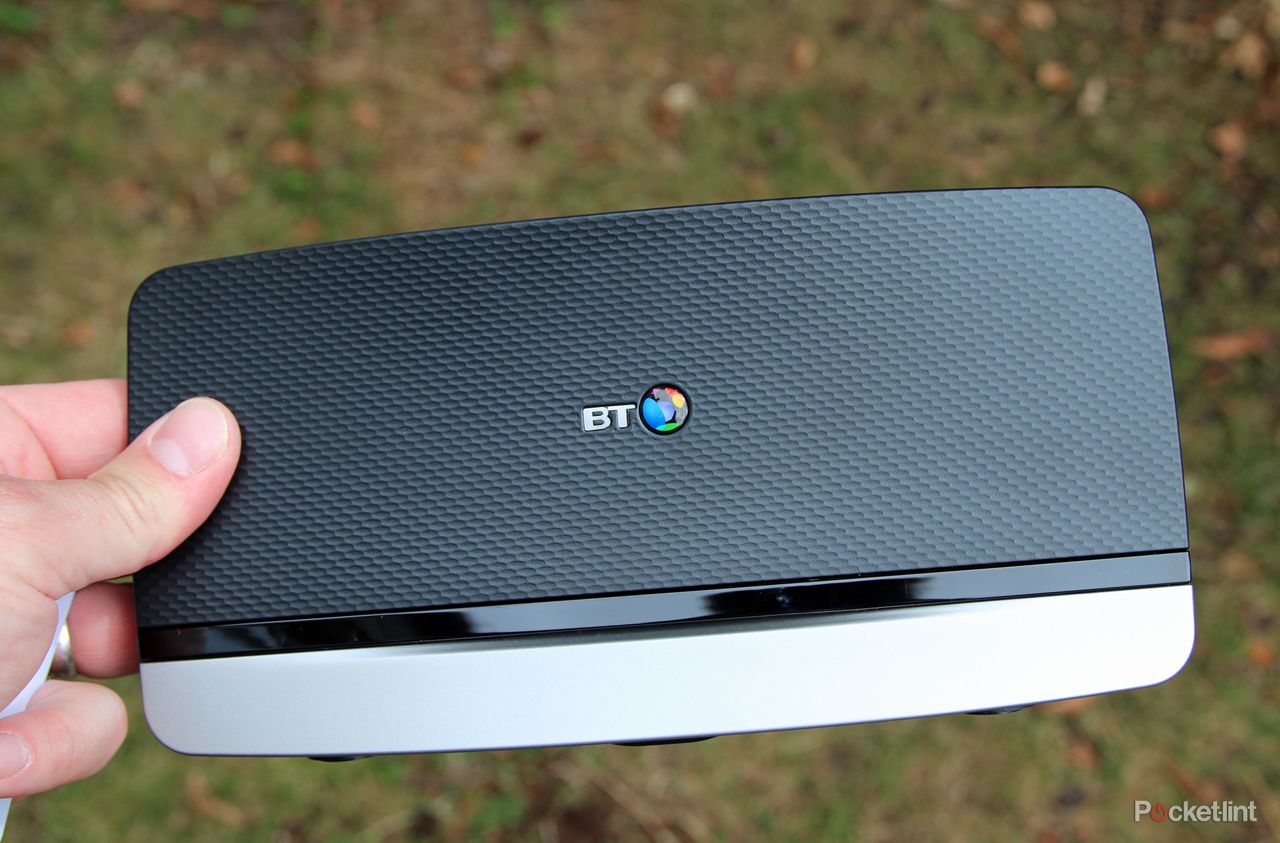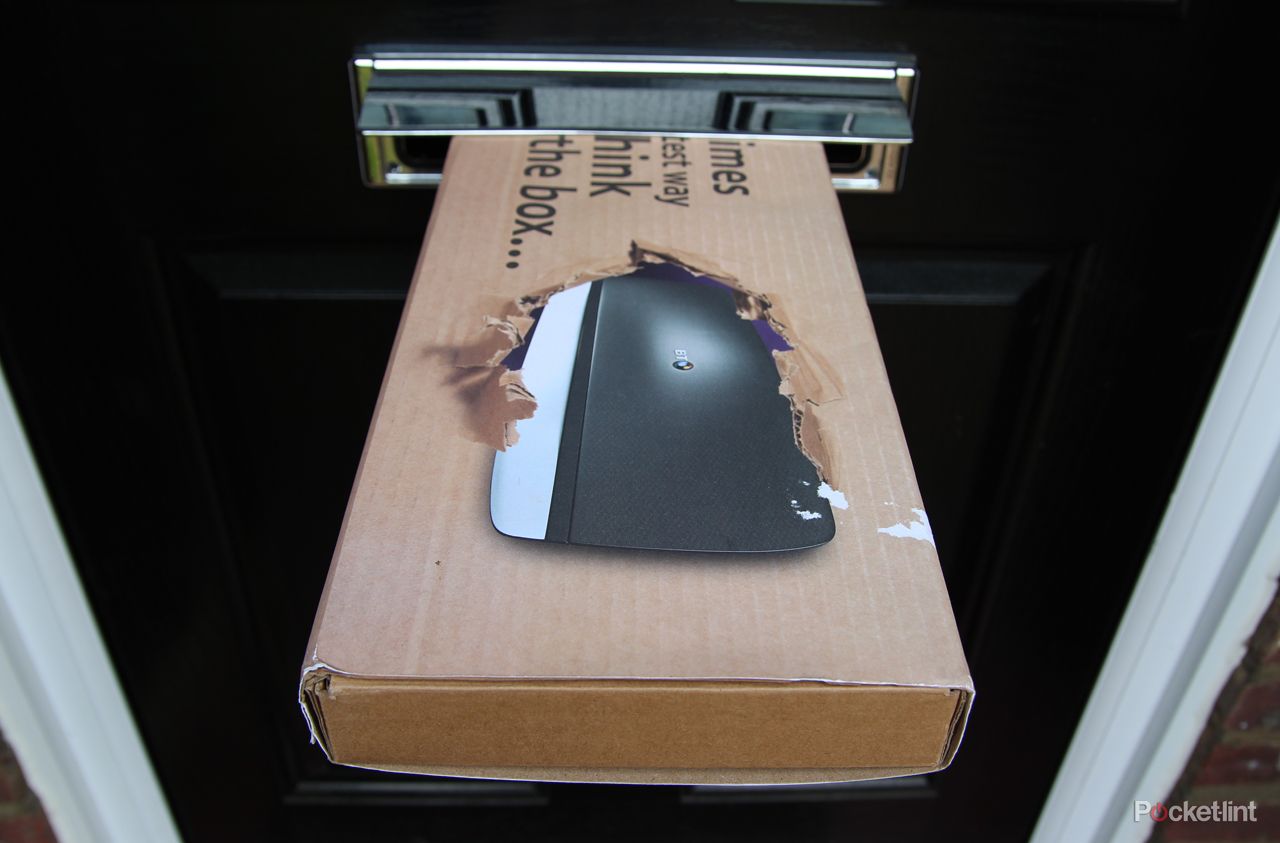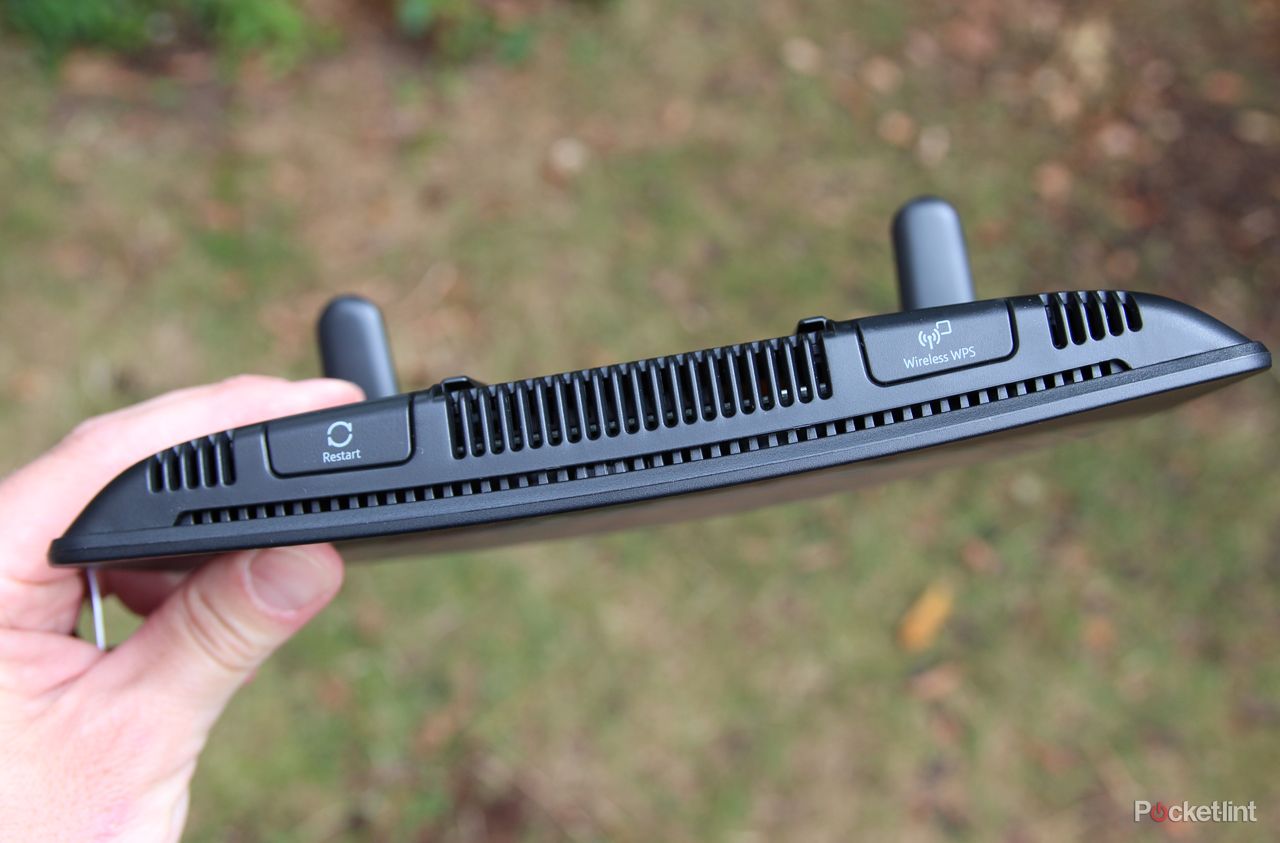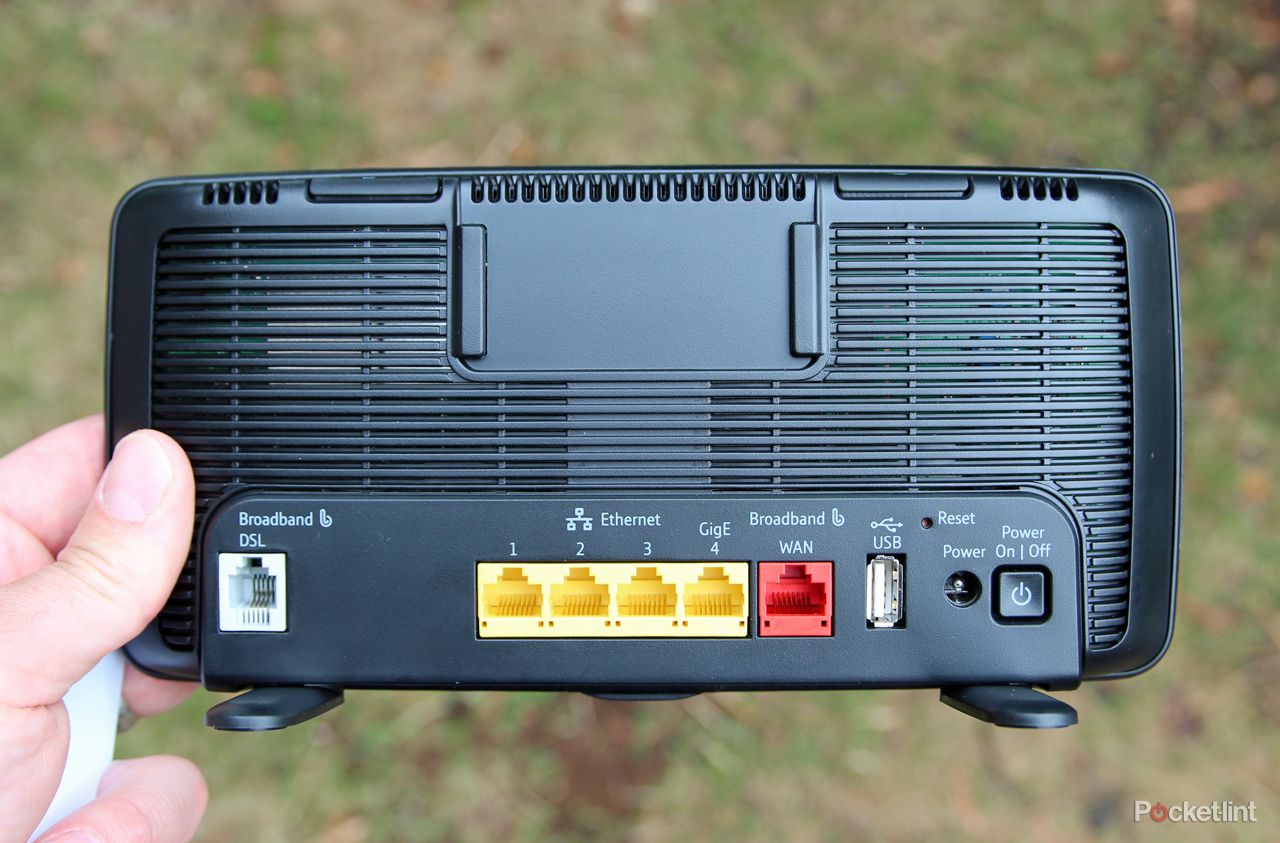One of the key points BT is pushing with its new HomeHub 4 router is the slim design. Not only is it designed to be less obtrusive in your home, but the packaging has also been created to make delivery easy, so it can be posted through your front door. That's how ours arrived.
If you're a new subscriber to BT Broadband or BT Infinity, then you're advised to set the package to one side and wait for your installation engineer to arrive, but there will be a subset of existing users who are interested in upgrading. BT is offering the HomeHub 4 as a standalone upgrade for £35.
We like the design of the new HomeHub 4, the matte finish is certainly nicer than the gloss of the HomeHub 3. The change in look means it doesn't spend its time looking dusty and dirty. It's also easier to access the reset and WPS buttons, now on the top, so it's more convenient when things go wrong or you want to add a new device.
If you're buying the HomeHub 4 as an upgrade, the draw - aside from the slimmer design and the better aesthetics - is that the new router supports dual-band Wi-Fi. That means it offers both 2.4GHz and 5GHz bands for your devices to connect to. There are also the three Ethernet and one Gigabit ports on the rear for connecting other network devices.
The advantage that dual-band Wi-Fi brings is that it should give you a more reliable connection. With supported dual-band devices you'll benefit because the router can effectively have two networks, with some devices on 5GHz and some on 2.4GHz.
Generally speaking, 5GHz will be better suited to closer devices giving you a stronger short-range signal, so your PC in your house may be connected on 5GHz, your smartphone in the garden on 2.4GHz. This is all smartly managed and should involve no effort on your behalf: the smart dual-band technology of BT's hub is just designed to give you a better Wi-Fi experience.
The aim is to provide a better connection for all the devices you want to connect, as well as avoiding interference. BT's hub is designed to smartly channel hop to make this happen, so if you have an old TV sender, for example, it won't interfere with your Wi-Fi devices.
If you're upgrading from the BT HomeHub 3, installing the BT HomeHub 4 is simply a case of swapping the routers and connecting the existing cables. The rear connections are the same, so if you have devices such as a network drive, it all works just as before. You just have to remember to connect your DSL modem, which is the part that actually connects to BT Broadband or BT Infinity.
The new BT HomeHub 4 comes with a new SSID and password, so your network name will change. Rather than reconfigure all your connected devices, it's probably easier to connect your PC and head into the HomeHub's admin section (type bthomehub.home into a browser) and change the SSID back to that of your old HomeHub - that way your existing devices will then just connect to the new router as they did the old.
That's really all there is to it and you'll be on to enjoying your new dual-band connection. When you connect a computer to your network for the first time you'll be prompted to make a few selections, like whether you want to turn on parental controls, but that's about it.
But there's one thing to watch out for. If you're choosing to change the SSID, as we've suggested above, then it's worth knowing that the HomeHub 4 will offer you different SSIDs for the different bands. That will allow you, for example, to elect to connect only to 5GHz for particular devices. This might be appropriate for some advanced users wanting a particular type of set-up, but it steps around the smart management of the bands to some extent. For average users, we'd advise you make sure you change the SSID of both to be the same, and leave the band management to the devices you connect.
But does it improve performance? Yes, the BT HomeHub 4 is more capable than the HomeHub 3 and following installation it was good to see our devices allocated to different channels. The MacBook in the house connected to 5GHz was reporting faster connection speeds more consistently.
We ran a series of internet speed tests on Wi-Fi before and after to get some anecdotal evidence that there was a difference. We certainly noticed the reliability of the 5GHz connection indoors, which appeared to give much more consistent Wi-Fi performance than previously.
Our quick tests also seemed to point to better range: we were able to get a faster connection from the HomeHub 4 at longer ranges, so out in the garden on a smartphone things were running faster than before. The new HomeHub 4 is also equipped with the more powerful processor, so it should be faster to access a network drive and start watching a movie, for example.
So is it worth the upgrade? If you're looking to improve the performance of your home network then perhaps. If you're a BT Infinity customer, however, you need to be aware that BT has also announced plans for the BT HomeHub 5, which will be available later in the year.
This will be an upgrade over the HH4, offering 802.11ac, which the HH4 on test here doesn't. That will again offer faster Wi-Fi performance with the latest devices, such as the new MacBook Air. The HomeHub 5 will also integrate the modem and router into the same package, so the DSL modem you currently have will no longer be needed. That will mean fewer boxes, fewer plugs and less mess.
We like the changes the BT HomeHub 4 bring and we're going to enjoy those benefits, but already we're hankering for HomeHub 5 to add that additional boost.




